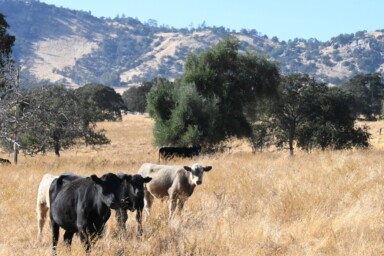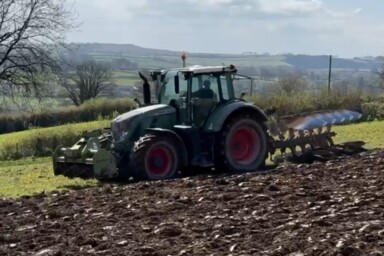Grains – the seeds of cereal grasses and so-called ‘pseudocereals’, which aren’t grasses per se but can be treated like them – have long been central to human nutrition, from ancient Aztec amaranth to Aboriginal Australian kangaroo grass. Grains, if they are properly processed, are incredible little nutritional packages for humans. They typically provide huge amounts of energy in the form of carbohydrates, plus crucial dietary fibre and a smorgasbord of bioavailable micronutrients, phytochemicals, vitamins, minerals and other components that interact with each other in ways that we don’t even really understand scientifically, but have appreciated nutritionally for thousands of years. This long-held and widespread appreciation of grains’ nutritional value is evidenced by the discovery of 30,000-year-old milling tools at archaeological sites from Europe to Australia, as well as by historical records of grain’s importance in the economy, lifestyle and nutrition of major societies such as Ancient Egypt and the Roman Empire.
In recent years and decades, however, our relationship with many grains has changed drastically – especially regarding health problems associated with eating more processed and refined grains – and detrimentally. Luckily, there are some people setting positive examples for how we can help to give these precious grains a better future.
Millet – keep it steady
Typically resistant to drought, millet has been a staple food across semi-arid regions of Africa and Asia for thousands of years. Today, it is the world’s sixth most important cereal crop, but unlike other major cereal crops, it is not a massive commodity. It is still grown predominantly on a subsistence scale by grassroots farmers in developing countries.
Millet is resilient and highly nutritious, and it’s also gluten-free. Therefore, it’s been put on the radar of gluten-conscious eaters in wealthier countries over recent years. One minor variety of West African millet, in particular, has been gaining traction abroad as a fashionable, nutritious traditional grain: fonio.
New York chef Pierre Thiam, a champion of contemporary Senegalese cooking in the United States, has been leading the way. He has featured the distinctively nutty, earthy taste of fonio at his restaurants, highlighted its tiny, couscous-like texture in his award-winning recipe books, and co-founded Yolélé Foods, a company offering creatively packaged fonio and ready-to-cook fonio meals (such as pilaf), which are sold through Whole Foods, Amazon and other American retailers.
However, there is some concern for the dreaded ‘quinoa effect’. After all, fonio is not the only neglected native West African millet. In particular, two other traditional millets – black fonio and guinea millet – are also crucial, as are a number of other heritage crops, to local cropping patterns in challenging remote regions. Having various landrace cultivars of all these crops gives poor, small-scale farmers a level of agrobiodiversity, which allows flexibility to adapt depending on particular conditions, weather fluctuations and social needs.
Therefore, there’s a chance that a sudden price rise for one particular crop (such as fonio), driven by international interest, could have unintended consequences for growers, by encouraging them to move away from traditional, sustainable farming practices and instead dedicate more land to growing fonio for immediate financial gain. This, in turn, could lead to problems such as soil degradation, disruption of ecosystems or reliance on external inputs by concentrating on greater yields. A sudden rise in price could also attract interest from returning absentee landowners or outside buyers, which may hike up land and living costs in remote rural areas. However, economic gain for these struggling farmers is important, and Thiam is conscious of the associated dangers. Therefore, he stresses the importance of making sure that economic growth remains steady (avoiding the kind of ecstasy and agony that quinoa caused South American farmers) by working closely with NGOs based on the ground in Senegal.
Wheat – keep it fresh
Wheat, almost an undisputed superfood in its pure form, has come a long way over more than 10,000 years of dedicated human interaction. During that time, we’ve made the most out of wheat, selecting for certain traits and making efficient systems for getting it harvested, ground and into our bodies. Within the past century and a half, however, making the most out of wheat has largely equated to making the most money out of wheat, and this has led us down a very broken path.
One example of how broken things are, is that we’ve lost our appreciation for the benefits of fresh flour. Up until the late 19th century, wheat had to be milled close to where it was going to be consumed. This is because it wouldn’t last the journey, as nutritious omega-3 fats released from the broken germ during milling, would turn the flour rancid within a few days. Since the invention of the steel roller mill in the 1870s, however, and the onset of bleaching, oxidising and other life-extending treatments, wheat flour has essentially been able to last indefinitely.
Eliminating flour’s propensity to go off, however, removed a lot of wheat’s nutritional value. Splitting wheat up and then reconstituting ‘wholemeal’ flour with bran, or ‘enriching’ flour with nutrients or treating it for longevity, is not the same as eating freshly milled whole grains in their natural form. Luckily, however, some people are setting the example of how to consume wheat in a more natural, nutrient-giving way by using fresh flour.
Ruth and Jeremy Heath are the couple behind The People’s Bread Co. in Wanaka, a popular resort and tourist town in New Zealand’s Central Otago region. In their tiny, trailer-sized microbakery, between school runs and looking after their four kids, they make sourdough bread from stoneground flour that they mill fresh themselves (immediately before baking, one batch of flour for each batch of dough), from organically grown grains sourced from around the South Island. They then deliver their bread, fresh to local customers.
It’s a simple, but very effective operation: people love the taste, and Jeremy (a former pharmacist) believes that he now helps people more with nutritional problems than he did in his former job. In addition, Harry Lowe, the farmer behind organic grain company Bio-Grains who supply the Heaths, says that this consumer-end interest for locally grown, freshly milled grains is filtering down to visible economic interest for farmers, who are now considering growing a wider variety of wheats and other grains, including heritage varieties. This is a very positive development, since the more farmers that grow these grains (rather than stockpiling lifeless seeds for stockfeed), the more affordable and available they will become to millers and bakers. So, perhaps operations like the People’s Bread Co. can manage to scale up or become more widespread, making such delicious, nutritious bread accessible to more people.
Buckwheat – keep it local
Originating around what is today southwestern China and Burma, domesticated buckwheat spread steadily across Eurasia in prehistory, crossing the Tibetan plateau and Central Asia into the Middle East and Europe, from where it was introduced to the Americas, Africa and Oceania. Today, Russia and China dominate global production, although buckwheat has also made itself prominent in Japanese (soba noodles), French (Breton galettes), Indian (especially for Hindus during periods of fasting), and many other traditional cuisines. More recently, it has become a popular gluten-free alternative in Western countries.
Still, buckwheat is also widely seen as a second-rate grain. It is commonly used for green manure, as a cover crop, or as a ‘poor man’s food’ where other staple crops cannot grow – such as in marginal regions with a short growing season, high altitude or nutrient-deficient and acidic soils. In Nepal, it has been a vital food crop in many remote Himalayan regions for those exact reasons, and as a result, different varieties of buckwheat have been cultivated in marginal areas of 61 out of Nepal’s 77 administrative districts, ranging from altitudes of 60 metres to 4500 metres above sea level. Today, however, many of these localised cultivars of buckwheat in Nepal are in danger of dying out, along with many other heritage crops, as they are gradually being replaced by modern, foreign hybrids and intensively farmed monocultures.
That is the reason why, several years ago, Yam Malla started the Darshan Nursery Initiative. Essentially, this meant that Yam, a permaculture and organic farming expert based in Chitwan, started visiting small-scale farmers around Nepal to collect seeds of traditional, heritage crops, including buckwheat. Currently, he stores these seeds in jars inside his family home, and he plants out small specimens in and around the family garden. He sees it as crucial that this genetic seed bank be an active, living thing, not locked away in a vault somewhere.
If he can find the financial and political support over the coming years, he hopes that the project can be taken to the level of growing selected cultivars on pilot plots (located in three distinct geographical and altitudinal zones, to reflect Nepal’s vast topographical and climatic variations), which will then be planted out on a commercial scale by local farmers in these areas. This will help farmers to regenerate their soils, provide more diverse sources of income, and slowly move away from the widespread reliance on annual seed purchases and fertiliser-dependent soils, a reliance that has gotten worse in recent years.
And finally, keep it simple
All grains cultivated and harvested by humans over the centuries are, in their own way, incredibly nutritious, particularly if grown in areas where they have become well adapted over time, and consumed locally and regionally, rather than being trucked long distances and stacked on shelves for months.
The wide diversity of traditional landrace grains grown are also having a renaissance in sustainable production. Be curious about the grains you eat and know the story behind them in terms of provenance and production – what are you eating; where does it come from; and how was it grown or made? While grains have fallen from grace in the rise of fad diets and industrialisation, they remain an essential food that has nourished human societies for thousands of years – we should make sure they continue to be a healthy and valuable food source going forward.







